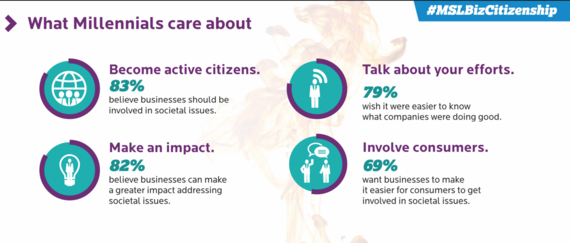For most, it’s easy to think of a millennial as a teenager with a phone attached to their hand or constantly binge-watching Netflix shows but the reality is that this generation is growing up and so is its retail habits. The most important thing to realize about this generation is the great diversity within it, primarily with its age range. It includes anyone born between 1978 and 1995, which means the oldest millennials are roughly 40 and the youngest are 22. This is a large gap that encompasses many milestones. As a millennial on the younger side and a college student, I have much different spending habits than someone born more towards the beginning of the generation who is in their 30s, perhaps married with children. It is important for retailers to focus on catering to all sides of the spectrum. As more and more millennials are starting to make the shift into the majority of the workforce and consumers, retailers should understand and re-evaluate where millennials’ shopping habits are currently. By doing so, this can help qualm some fears and anxieties about the future of retail to tenants and investors. For more information how generations have affected and adjusted to the industry, click here.
Online Shopping
While the convenience of a mobile platform is paramount to millennials, it is not the only reason they keep gravitating more towards cyber-retailers; it’s simply the best way to see what is available on the market. As established, a lot of the generation’s time is spent online, and in particular social media sites. Naturally, some profiles stand out more and the owners of these accounts have now become known as “social media influencers”, the use of which can be crucial for a lot of retailers. To give an example, there are many influencers, which also include bloggers and vloggers, who demonstrate or try on their purchases in picture or video format. They often link where to buy the products or tag companies, making the purchasing process very simple as well as giving exposure of the brand to thousands of people with just one photograph. It can be seen as virtually trying on or testing products. However, social media is also a proponent for why millennials still go out to get one thing they can’t online: experiences. Well, that and no shipping prices.
Experiences Matter
With cost of living and student debt constantly rising, it is no wonder why millennial spending habits are adjusting. If there is an opportunity to spend $20 on a new top or trying a new restaurant, most would choose the latter. This is true for a few reasons, one of which being its correlation to social media. You can post via various apps where you are and what you are doing to showcasing to friends your experience and awareness of what is “cool”. Going out also allows for social interaction and promotes the popular wellness of the work-life balance. If most of one’s spending money was spent on material items, it wouldn’t leave much to spend with friends and activities. Since a lot of millennials’ time is spent online, human interaction is crucial to social life. This is why restaurants, bars, trendy workout studios, and activity centers have been left undisturbed by the “retail apocalypse”.
The other reason for shopping brick-and-mortar is the fact that it is a leisure activity to partake in. Though we like to buy online, there is something far more gratifying to have a product immediately —another defining quality of the generation. Personally, if I have time, I greatly enjoy just wandering down each aisle touching, feeling products, reading labels and being around other people doing the exact same. Additionally, shopping itself can be seen very therapeutic. Studies even show that “retail therapy” can been a useful strategy in trying to improve one’s mood [Atalay, Meloy]. Retailers can use this as an advantage by making the shopping experience cater to consumer’s senses – free samples or demonstrations, a distinct smell in the store, live music or other events on weekends, etc.
Ethical Spending
For a long time, the biggest fad was trying to constantly discover the next fad. However, recently there has been a slight decline in materialism. There is a large emphasis on ethical buying and natural products. People are becoming more engaged in politics, cultural, and societal issues which can translate to their purchasing habits. For example, some shoppers may be less likely to buy something from stores that partake in child labor, support certain politicians, or fire people in favor of machine automation. Millennials are less likely to spend money unnecessarily but when they do spend, they prefer to give money to brands with positive and sustainable business ethics, even if that means shelling a few extra dollars. The graphic below [Psychologytoday.com] showcases that majority of the generation’s expect more of large corporations than just the products they provide.
In conclusion, there are several more aspects that retailers should be taking into consideration when designing products and services toward millennials. While stereotypes of the generation may exist for a reason, some are quite outdated and creating marketing tactics towards them will not benefit the producer or the consumer. Tapping into what current trends or habits are occurring could mean tapping into a larger potential and profit.
